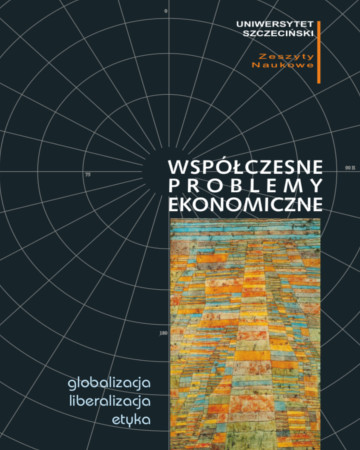
ISSN: 2081-9579
eISSN: 2353-2815
OAI
DOI: 10.18276/wpe.2016.13-03


Liste der Ausgaben /
nr 13 (2016)
Migracje międzynarodowe a globalny problem ubóstwa
| Autoren: |
Agnieszka
Piekutowska
Uniwersytet w Białymstoku, Wydział Ekonomii i Zarządzania |
| Schlüsselbegriffe: | migracje ubóstwo Afryka Subsaharyjska |
| Data publikacji całości: | 2016 |
| Seitenanzahl: | 11 (27-37) |
| Klasyfikacja JEL: | I32 J61 |
Abstract
Celem artykułu była analiza migracji międzynarodowych z najbardziej dotkniętych ubóstwem państw świata.Przyjęto następującą hipotezę: migracje międzynarodowe nie stanowią narzędzia istotnie przyczyniającego się doredukcji problemu ubóstwa na świecie. Jak zostało wykazane, państwa najuboższe – choć mają najsilniejsze przesłankido emigracji – charakteryzują się ograniczoną mobilnością międzynarodową. Dodatkowo ograniczone są korzyściz migracji, co rodzi wiele wyzwań m.in. w zakresie zwiększenia pozytywnego oddziaływania remittances jako narzędziasprzyjającemu zwalczaniu skrajnego ubóstwa.
herunterladen
Artikeldatei
Bibliographie
| 1. | Adams Jr., R.H., Pege, J. (2005). Do International Migration and Remittances Reduce Poverty in Developing Countries? World Development 33, (10). DOI: 10.1016/j.worlddev.2005.05.004. |
| 2. | Baza Banku Światowego (2016). Pobrano z: http://data.worldbank.org/. |
| 3. | Bodvarsson, Ӧ.B., Van der Berg, H. (2013). The Economics of Immigration. Theory and Policy. Springer. |
| 4. | Cruz, M., Foster, J., Quillin, B., Schellekens, P. (2015). Ending Extreme Poverty and Sharing Prosperity: Progress and Policies, World Bank Group. Policy Research Note, 3, 2–8. |
| 5. | Hatton, T.J., Williamson, J.G. (2009). Emigration in the long run: evidence from two global centuries. Asian Pacific Economic Literature 23(2), 17–19. DOI: 10.1111/j.1467-8411.2009.01238.x. |
| 6. | IOM (2015). World Migration Report. Migrants and Cities: New Partnerships to Manage Mobility. Pobrano z: https://www.iom.int/world-migration-report-2015. |
| 7. | KNOMAD – Global Knowledge Partnership on Migration and Development (2016). Migration and Remittances Factbook. Pobrano z: http://www.worldbank.org/en/topic/migrationremittancesdiasporaissues. |
| 8. | Nalane, L.J., Chikanda, A., Crush, J. (2012). The remittances framework in Lesotho: Assessment of policies and programmes promoting the multiplier effect. International Organization for Migration (IOM), ACP Observatory on Migration. |
| 9. | Obaid, T.A. (2006). Statement by Ms. Thoraya Ahmed Obaid, Executive Director, United Nations Population Fund. United Nations Commission on Population and Development. |
| 10. | Özden, Ç., Schiff, M. (2006). International migration, remittances, and the brain drain. The World Bank, Palgrave Macmillan. |
| 11. | Taylor, E.J. (2006). International migration and economic development: puzzles and policies for LDCs. Keynote Address at thirty-ninth session Commission on Population and Development, |
| 12. | United Nations. Pobrano z: http://www.un.org/en/development/desa/population/pdf/commission/2006/keynote/taylor.pdf. |
| 13. | Thamae, R.I., Kolobe, L.G. (2016). The Fiscal Effects of Foreign Aid in Lesotho. Mediterranean Journal of Social Sciences, 7 (1), 117–122. |
| 14. | The World Bank (2006). Global Economic Prospects. Economic Implications of Remittances and Migration. |
| 15. | The World Bank (2015a). Madagascar – evolution économiquerécente. Pobrano z: http://documents.worldbank.org/curated/en/2015/09/25014833/madagascar-economic-update. |
| 16. | The World Bank (2015b). Remittance Prices Worldwide. Issue No. 15. |
| 17. | The World Bank – Poverty and Equity Database (2016). Pobrano z: http://databank.worldbank.org/data/reports.aspx?source=poverty-and-equity-database. |
| 18. | United Nations – General Assembly (2015). Resolution adopted by the General Assembly on 25 September 2015 – Transforming our world: the 2030 Agenda for Sustainable Development. |